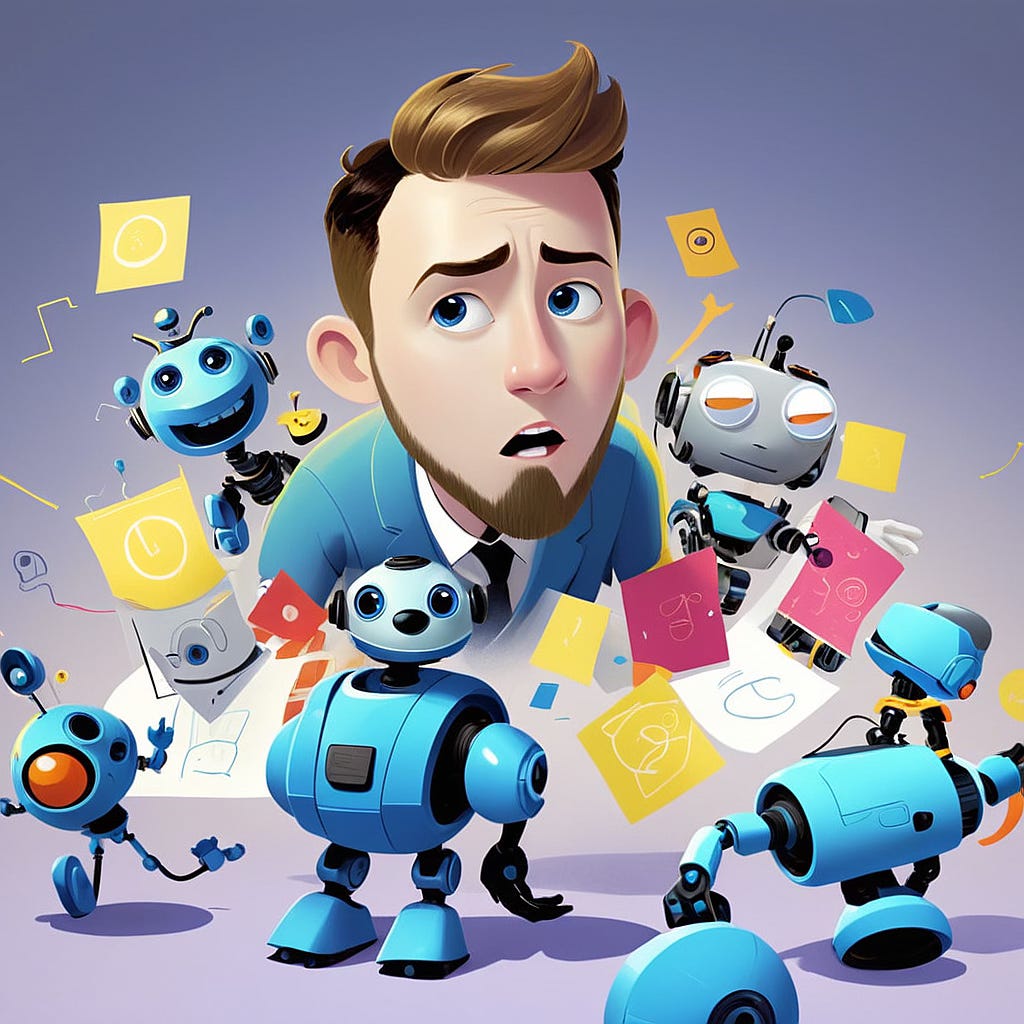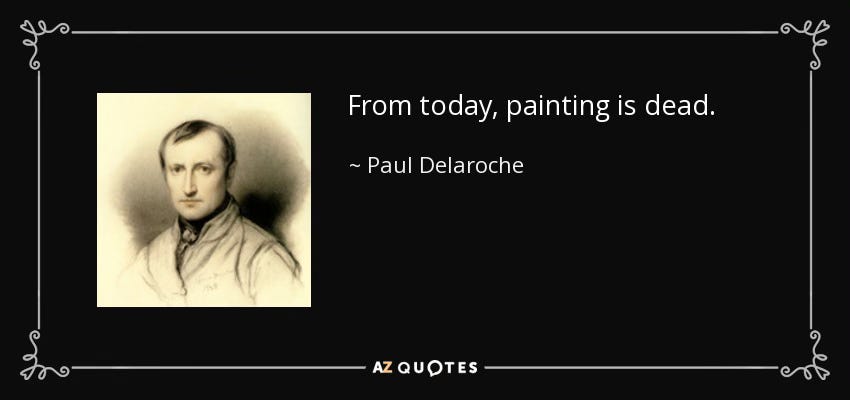Design’s Next Chapter: AI's Elevation of Creativity
How the design industry can learn from history and risk to adopt AI
In an era where artificial intelligence is rapidly transforming the design industry, creatives face both unprecedented challenges and opportunities.
In this article I delve into the historical parallels of technological disruption, the emotional impact on designers, and the lessons learnt from visionary leadership in Dubai to embrace the risks of AI.
If you’re a designer looking for practical strategies to adapt and thrive, read on to learn how to harness AI as a collaborative tool, to remain at the forefront of innovation in the evolving landscape of design.
Design in the Age of AI: Embracing Evolution Over Extinction
When the camera was invented, painters panicked.
When Photoshop rose, retouchers rebelled.
Now, as AI tools like Midjourney and ChatGPT generate designs and content in seconds, the design world finds itself confronting a familiar question:
"What if this machine replaces me?"
From Berlin studios to Hollywood editing rooms to Dubai’s design schools, a wave of anxiety is gripping designers.
AI isn’t looming. It’s here—disrupting timelines, job descriptions, and egos.
A quiet war is playing out between the algorithm and the designer. And just like before, fear is louder than foresight.
But history offers perspective.
A History of Panic and Progress
When photography emerged in the 1800s, French painter Paul Delaroche reportedly exclaimed,
It wasn’t.
Instead, painters stopped obsessing over realism and invented Impressionism. Cubism. Surrealism.
The lens didn’t erase art. It gave it new terrain.
When the synthesizer arrived, critics declared it the end of music.
Instead, it gave rise to entire genres—electronic, hip-hop, techno—unlocking creative identities that never fit the old mold.
Even the printing press was once banned by elites for making “too many voices.” It went on to empower revolutions.
Technology doesn’t kill creativity.
It forces it to evolve.
The AI Surge—and the Emotional Fallout
In 2024, AI-generated artwork flooded the internet—instantly, eerily impressive.
Zalando revealed 70% of its marketing visuals were now AI-built, cutting image costs by 90%.
WPP’s 48,000 creatives now collaborate with “WPP Open”—a system that drafts campaigns before coffee is finished.
For every gain in productivity, a creative somewhere whispered: "But what about my job?"
And yes—layoffs are real.
In the gaming industry, concept artists are being replaced by Stable Diffusion pipelines.
In music, AI-generated songs now top Spotify charts, while lawsuits mount from those who feel their voice—literal or metaphorical—was cloned without consent.
This isn’t a theoretical debate anymore.
It’s personal.
It’s scary.
It’s happening.
What Dubai Teaches Us About Risk and AI
But here in Dubai, the perspective shifts.
The man behind its transformation, Sheikh Mohammed bin Rashid Al Maktoum, wrote in Flashes of Thought:
"To take risk and fail is not a failure. Real failure is to fear taking any risk."
This city didn’t rise from sand to skyline by protecting the status quo.
It reimagined the possible—on purpose.
From AI courts to the Museum of the Future, the UAE teaches a brutal, beautiful lesson: those who hesitate, watch. Those who try, shape.
For designers, that lesson is vital.
The risk isn’t trying AI.
The risk is staying still while others learn to fly with AI.
So What Can Designers Do Now To Embrace AI?
Here's what I tell them to grip the fear:
Master the machine.
Learn the tools. Prompt engineering isn’t optional—it’s literacy.Move up the stack.
Stop pixel-pushing. Start orchestrating. Strategy, storytelling, and system design are the new superpowers.Make taste your edge.
AI is fast. But it’s tasteless. Curate, don’t just create.Prototype with AI.
Use it to test ideas 10x faster. Let it stretch you, not replace you.Ask: What do I offer that AI can’t?
The answer is likely empathy, context, cultural nuance, moral judgment. Build there.
Beyond Automation: How Synaptix is Elevating Designers to Prepare For Jobs Using AI
As artificial intelligence continues to redefine the design landscape, the pertinent question isn't whether designers will be replaced, but how they can evolve alongside these technologies.
At Synaptix, we're dedicated to ensuring that designers not only adapt but thrive in this new era.
Our approach centres on upskilling design professionals to leverage AI as a collaborative tool, enhancing their capabilities rather than replacing them. We offer comprehensive training programs that demystify AI, providing practical insights into integrating AI tools into the design process.
This includes understanding how AI can handle repetitive tasks, allowing designers to focus on how their jobs will evolve with strategic, empathetic, and innovative aspects of their work.
We guide in the following way:
AI Literacy and Training: Equipping teams with the knowledge to understand and utilise AI tools to prototype effectively.
Strategic Implementation: Identifying areas where AI can add value and develop tailored strategies for integration into workforces.
Ethical and Compliant Practices: Ensuring AI adoption aligns with ethical standards and regulatory requirements.
By embracing AI, designers can elevate their roles, focusing on innovation, user experience, and strategic thinking.
Synaptix is here to support that transition, ensuring that the design industry not only survives the AI revolution but works with it as a team mate.
For more information on how Synaptix can assist in integrating AI into your design processes, feel free to reach out to us at info@synaptix.ae






